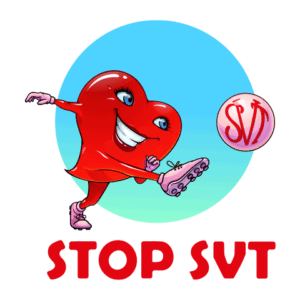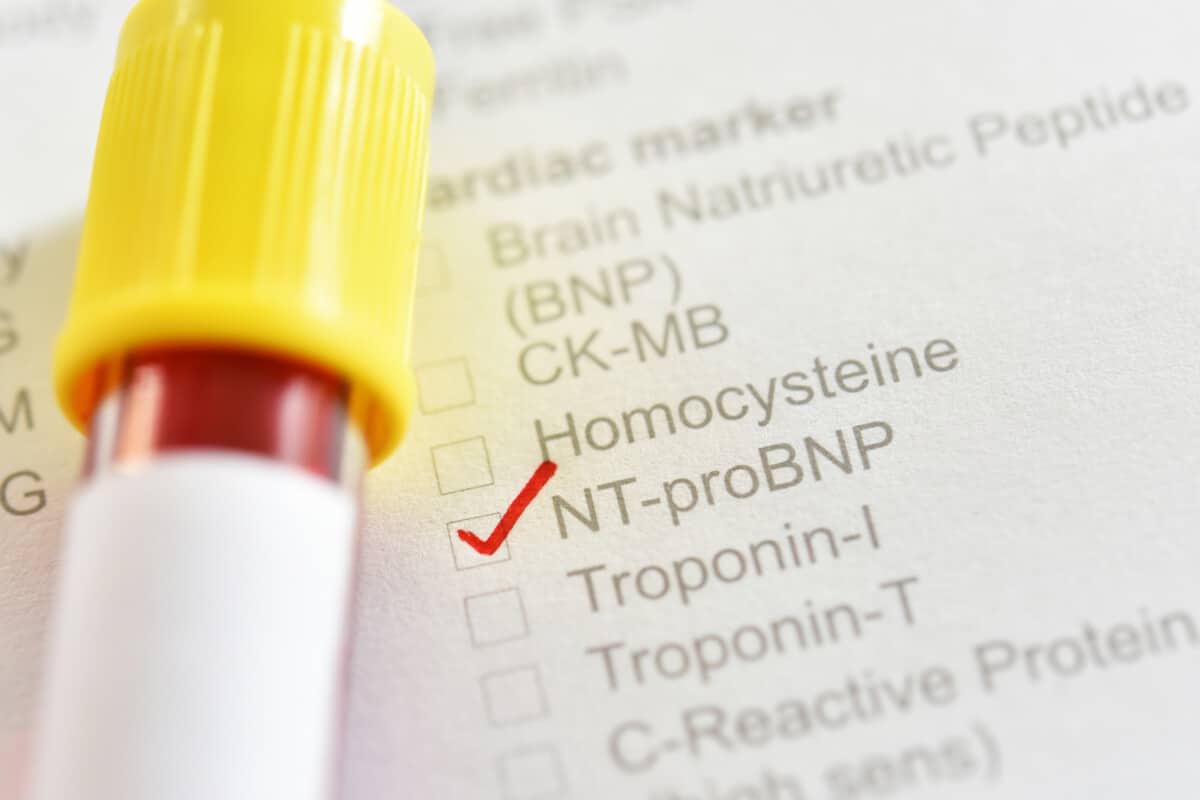Quite often, persons with supraventricular tachycardia (SVT) tend to have episodes whose symptoms are similar to those of a panic attack making it difficult for a diagnosis to be made because it is necessary for an episode to be recorded on an ECG in order to have an SVT diagnosis made.
For this reason, many persons with the condition go undiagnosed for years. Because by the time they get to the doctor, the episode would have already ended.
Within this article, we will discuss the possibility of diagnosing supraventricular tachycardia with a blood test.
Research has found that with a simple blood test, the doctor can determine if it was an anxiety attack or SVT. Having high levels of specific hormones called natriuretic peptides within the blood half an hour after an episode indicates SVT.
This means that persons with supraventricular tachycardia can receive a diagnosis by doing a blood test instead of waiting for what can be years to have their episode recorded on an ECG.
For those persons displaying tachycardia-related symptoms during episodes but do not have SVT, early analysis of the substance within their blood allows the clinician to rule out tachycardia and or SVT.
Many persons with SVT may go undiagnosed because of the current diagnostic process.
Additionally, practitioners often overlook supraventricular tachycardia as one of the possible reasons for tachycardia. Still, there are more than a few reasons for having an elevated pulse rate than a panic attack.
Table of Contents
An Overview of Supraventricular Tachycardia (SVT)
Supraventricular tachycardia (SVT) is an abnormally fast heartbeat. SVT is used to describe numerous rhythm issues (heart arrhythmias) associated with the heart. These irregularities originate above the ventricles, which are the lower sections of the heart (this is why it is referred to as supraventricular).
An individual with a regular heart rate should experience 60 to 100 beats per minute. When the beats per minute are between 100 and 150, then it is known as tachycardia, an abnormally fast heart rate.
Tachycardia is just a name to describe a rapid heart beat over 100 and occurs when the impulses that coordinate our heartbeats begin to malfunction.
Someone experiencing this abnormality may describe it as either a fluttering or racing feeling of the heart.
SVT occurs when the beats per minute exceed 150 and can severely affect the lives of some persons, causing them to need treatment or implement lifestyle changes.
However, many persons experience rare episodes of supraventricular tachycardia and so are able to live relatively normal lives without lifestyle restrictions or medical interventions.
How you may feel when you have SVT
Episodes of supraventricular tachycardia may occur and stop suddenly. But may also have periods of regular heart rates in between.
For persons with heart disease and other underlying conditions, supraventricular tachycardia poses a real threat if it is ongoing and occurs often.
The more common signs and symptoms of supraventricular tachycardia include, but are not limited to:
● A fluttering in your chest
● Shortness of breath
● Lightheadedness or dizziness
● Rapid heartbeat (palpitations)
● A pounding sensation in the neck
● Fainting (syncope) or near fainting
● Sweating
Difficulties Faced When Diagnosing Supraventricular Tachycardia
The main factors that are responsible for complicating and slowing down the diagnosis of SVT in clinical practice are:
Shorter SVT episodes
They contribute to the long wait for a diagnosis of SVT.
The extended period is due to the fact that tachycardia-related symptoms start and cease very suddenly, so they may not allow time to make an ECG recording and clinical diagnosis.
Individual perception of SVT
Each patient will not describe their experience as the same. So with varying descriptions, it can be difficult for the practitioner to link the symptoms to the standard specifications of SVT.
An individual experiencing possible SVT symptoms might feel slight chest discomfort, experience fainting without even having any throbbing of the heart or pulse (palpitation).
Additionally, there have been instances where unusual signs and symptoms of SVT, such as ringing in the ear, burping, asthma-like attacks, and seizure-like attacks, have been reported.
Symptoms of SVT are noted to involve not only our heart rate but also our nervous systems.
The SVT medical documentation approach
The documentation of tachycardia put together by the doctor who specializes in the electrical activity of your heart has a vital role to play in the process of diagnosing SVT.
It assists by helping to make medical associations with the symptoms experienced by us that will facilitate a correct diagnosis to guide treatment.
There is a specified symptomatic and ECG criteria for SVT diagnosis, treatment, and referral for the study of the electrical activity in the heart, whether normal or abnormal (electrophysiologic studies), but they are not always straightforward.
The Science Behind Diagnosing SVT Via Blood Test
SVT is sometimes overlooked as the culprit of palpitation or racing of the heart in many persons that have a normal ECG and heart rate when checked.
Researchers advise that general practitioners, cardiologists, and electrophysiologists consider the possibility of SVT and look at their accompanying symptoms in-depth in relation to SVT.
They make this suggestion on the premise of their scientific findings from several types of research (1) that show that specific hormones (Natriuretic peptides) are released in a very high quantity into the blood shortly after an episode of SVT has occurred.
They have explained in several articles that three specific peptides will show up in the results of a blood test done thirty minutes after the episode.
As such, researchers recommend that practitioners and specialists ought to request blood studies to ascertain the level of the determining substance (Natriuretic peptides) within the blood early in postattack periods.
Employing this method would help to discover the presence of SVT in emergency departments, clinics, and doctors’ offices in selected cases.
Relating Natriuretic Peptides To Supraventricular Tachycardia
During an SVT episode, an increase in the secretion of a specific natriuretic peptide called ANP is seen and sustained for thirty minutes.
When there is a release of ANP, it causes additional excretion of urine, sodium, potassium, and chloride.
It also facilitates an increase in the filtration rate of the kidneys, and urine flow, the relaxation of some muscles in the blood vessels, and a lowered blood pressure effect.
The increased excretion of electrolytes such as sodium and potassium causes a drop in the blood pressure, which are likely the underlying reasons for fatigue and dizziness after an episode.
The other two peptides that are found in high quantity in the blood post-episode are:
- BNP, which is released from the muscle of the heart, and
- CNP, which is secreted mainly from the thin lining within blood vessels.
Trials analyze various levels of ANP, BNP, and CNP within the blood. The studies revealed that each time after an SVT attack, the levels of each peptide were significantly higher in the artery closer to the heart than those farther away.
These findings indicated that in the body, the heart is a primary source of natriuretic peptides, including ANP, BNP, and CNP, both at rest and after an SVT episode.
It also shows that if an episode lasts for half an hour, it prompts the heart to release ANP, BNP, and CNP.
How do you test for SVT?
Natriuretic peptides (NPs) are hormones typically secreted from the heart (2).
To date, only four groups of these hormones have been identified, they are: atrial natriuretic peptide (ANP),
- atrial natriuretic peptide (ANP)
- B-type natriuretic peptide (BNP)
- C-type natriuretic peptide (CNP)
- dendroaspis natriuretic peptide, a D-type natriuretic peptide (DNP)
Each peptide has its unique functions. Usually, only small levels of these peptides are found within the bloodstream.
Natriuretic peptide tests measure the levels of certain hormones in the blood when the heart is stressed, and it is used as an indicator that reveals the extent of heart failure.
In other words, it can show if anything goes wrong in the ventricles when the heart struggles to pump blood.
Your health care provider may request either a BNP test or an NT-proBNP blood test, but not both.
For the test, a professional will take a sample of blood from a vein in your arm using a small needle. Only a small amount of blood will be collected into a vial.
Generally, this test is not painful; most persons tend to feel a slight pinch when the needle gets inserted. The process should be less than five minutes.
The test is most often used to diagnose or rule out heart failure, but now with scientific evidence, can be used to diagnose supraventricular tachycardia.

